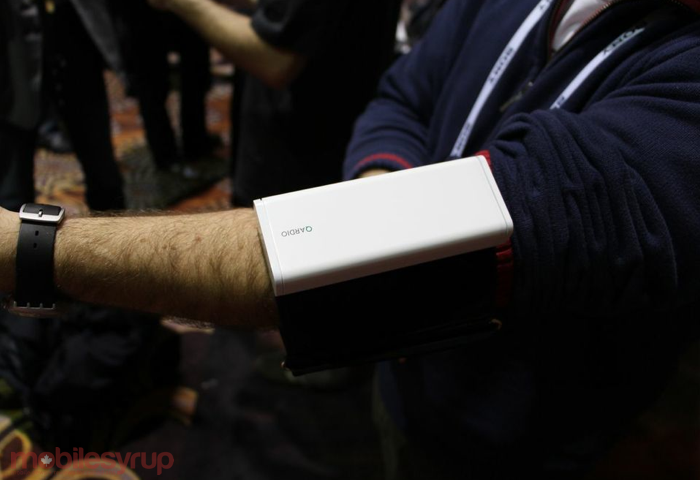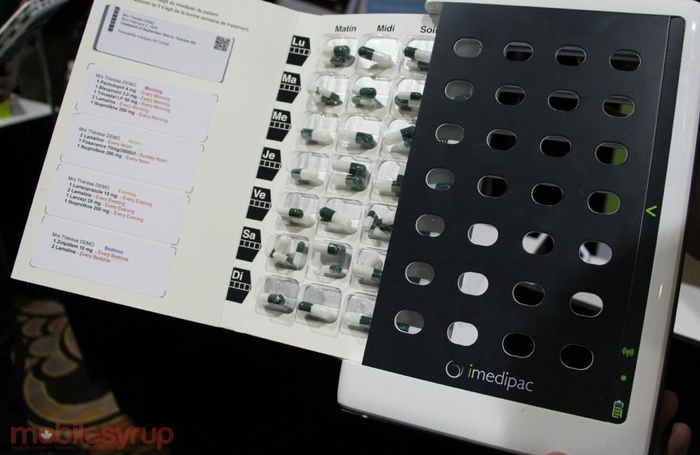
This year at CES, there’s noticeably more digital health wearable devices on the floor than most other product categories. Digital health is seeing a boom right now, mostly driven by the accessibility of cheap sensors that gather data, along with the mass adoption of smartphones and tablets used to analyze and process it.
Withings, the company behind the world’s first Wi-Fi connected scale, unveiled the Aura, a smart sleep system comprised of a sensor pad and bedside device. The system is expected to be available in the spring of this year for $299. The sensor pad slips under you mattress and records data based on your body movements, heart rate and breathing. The light and sound bedside device looks at your bedroom environment at things like temperature, light levels and even noise pollution. Together, the units record and monitor the two most important factors when trying to understand your sleep: you and your environment.
The recorded data can be visualized in the Withings’ mobile application. It is also used to control the Apple-esque bedside device. The sensor also sends your sleeping patterns to the bedside device to trigger specific light and sound programs that adapt to your personal body clock and improve sleep conditions.

San Francisco-based Qardio showcased a much more active approach to health management with their smart blood pressure monitor, QardioArm. The wireless armband straps on your arm and inflates/deflates just like the blood pressure device at your doctor’s office. The data is then wirelessly transmitted to the Qardio smartphone app where systolic and diastolic measurements are visualized in an easy, colourful way.
Like the Aura, the app provides users with the necessary data they need to autonomously gauge how healthy they are, empowering the individual with the data they need to justify possibly lifestyle changes in exercise or diet. But Qardio takes it one step further by giving their users the tools to share their medical-grade data with a doctor so that they can continue to get professional assistance without visiting their office.
It is in this cloud-based healthcare that Qardio has the potential of being the most disruptive. The ability for your doctor to more regularly see your health vitals reduces the need for frequent doctor visits, which saves time and money, but more importantly, could help flag health issues early on, increasing the chance of recovery if the doctor catches anything due to irregularities.
Qardio is currently working on achieving the necessary regulatory approvals to get the Arm to market. They expect it will be ready early this year for the Europe and the US with Canada coming soon after. The device will retail for $99 US dollars.

French company medissimo also allows users to share data collected with their device with their healthcare provider. Their smart pill box, the imedipac, uses a combination of sensors, LED lights and sound to remind patients when to take their meds. Since it also tracks what the user has taken it can also warn them in cases where they may be trying to take their meds again or trying to combine drugs that have negative consequences. Right now, medissimo is focused on getting the smart pill box live in Europe but they have plans on taking it to North America once the model has been proven overseas.
Right now these sensors all track things in isolation. Aura, your sleep. Qardio, your blood pressure. medissimo, your drug intake. But as more digital health devices infiltrate the home, it is only a matter of time before these solutions are combined to create an autonomous, digital doctor.


